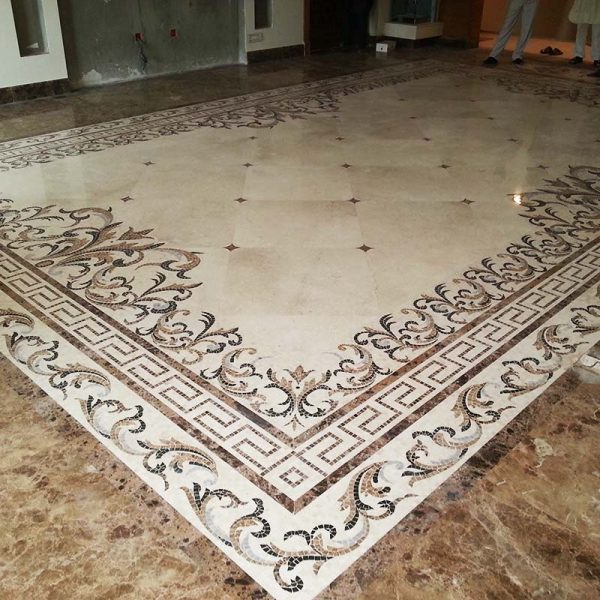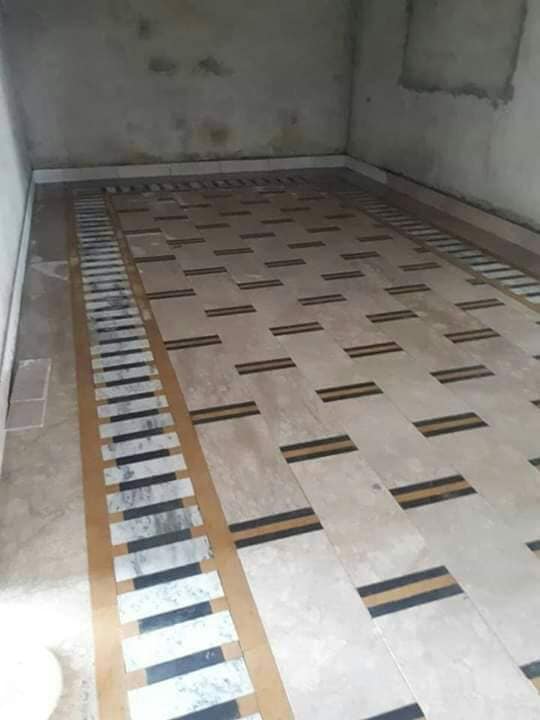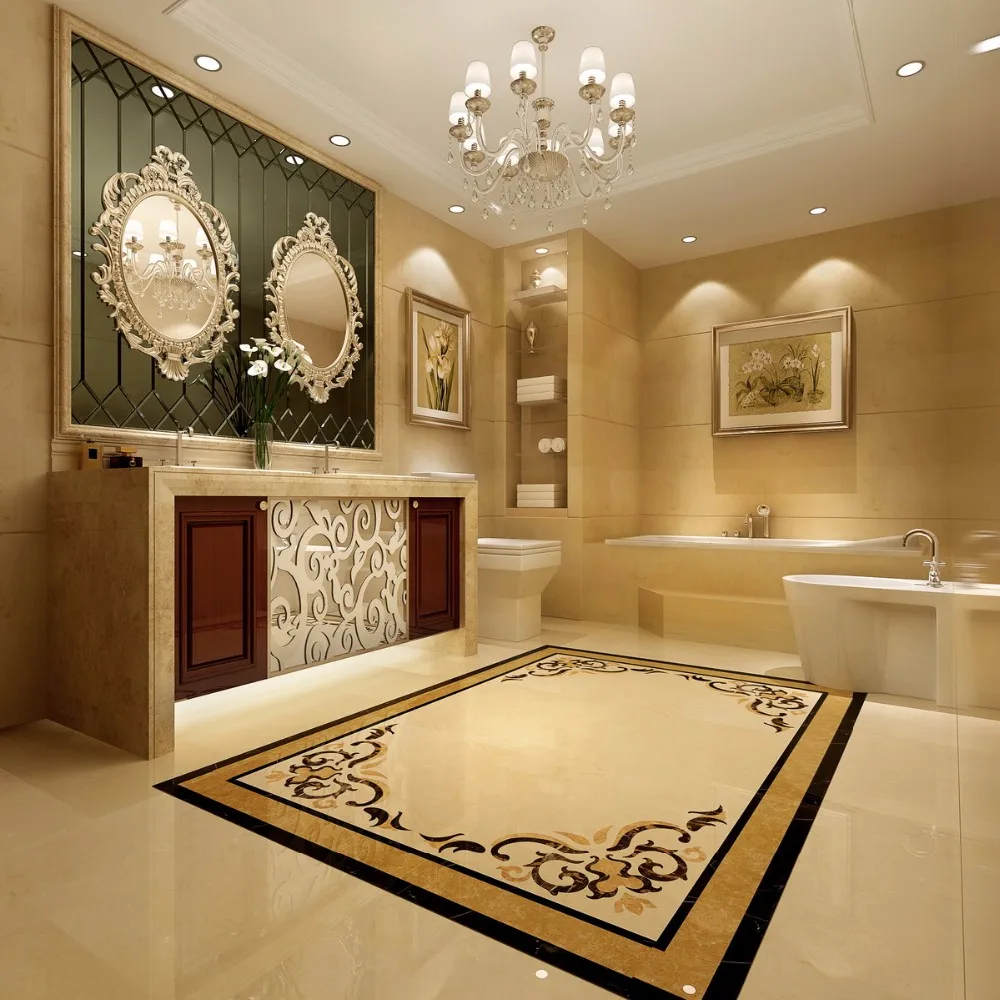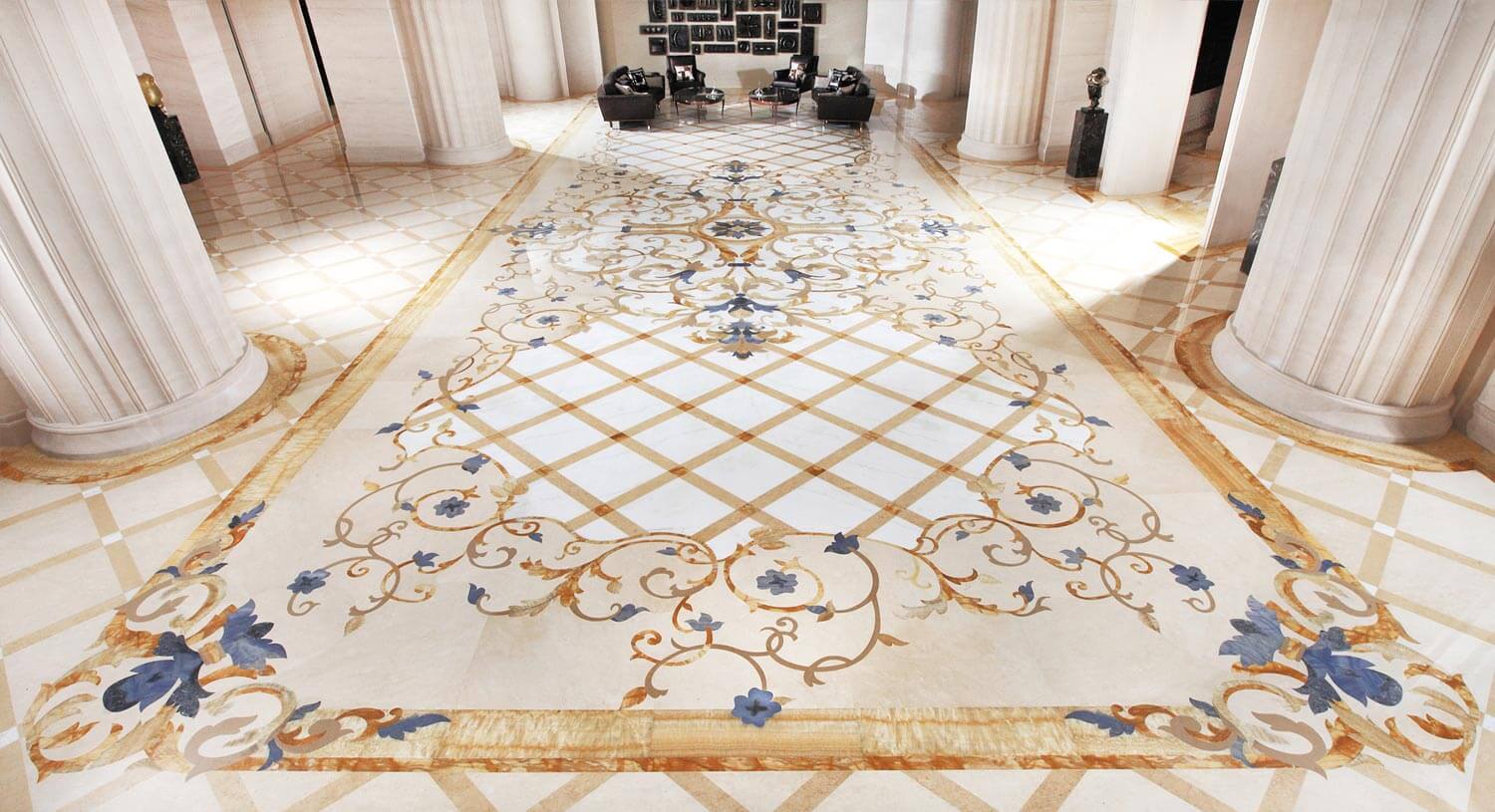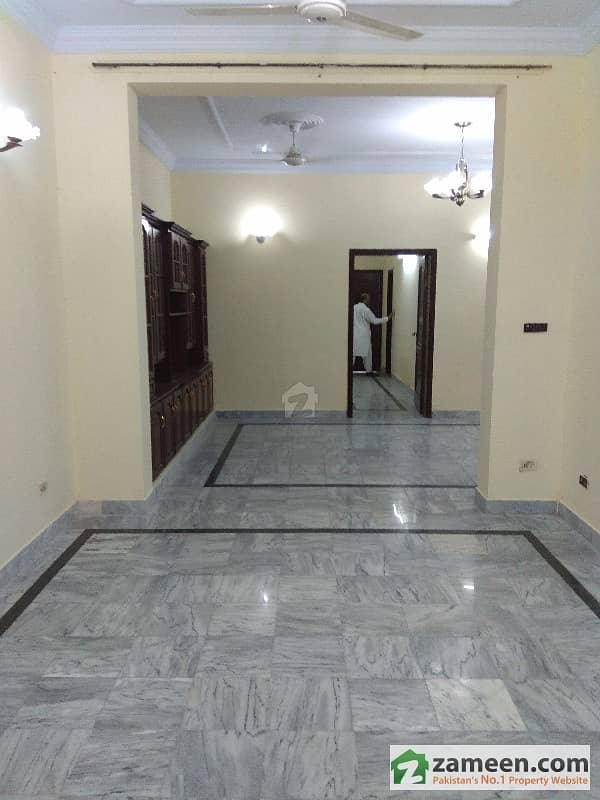The Elegance of Marble Floor Designs
Marble flooring is a hallmark of luxury and elegance, renowned for its timeless beauty and sophisticated appeal. It has been a preferred choice for flooring in palaces, grand buildings, and homes for centuries. The variety of colors, patterns, and finishes available in marble makes it a versatile material that can complement any style of decor. Let’s discuss more about marble floor designs, exploring their history, types, and the unique ways they can transform a space.
The History and Allure of Marble Floors
A Rich Historical Legacy
Marble has been a favored material since ancient times. The Greeks and Romans used it extensively in their architecture, appreciating its durability and aesthetic appeal. Famous structures such as the Parthenon and the Roman Colosseum showcase the timeless beauty of marble.
Symbol of Luxury and Power
Throughout history, marble flooring has been associated with wealth and power. Its use in palatial buildings and important public spaces underscored the status of the owner. This historical association continues to influence its perception as a luxurious flooring option.
Renaissance Revival
The Renaissance period saw a renewed interest in marble, with artists and architects using it in their masterpieces. From Michelangelo’s David to the intricate floors of the Vatican, marble became synonymous with artistic excellence and grandeur.
Modern-Day Popularity
In contemporary design, marble flooring remains highly desirable. Advances in technology have made it more accessible and easier to maintain, allowing more homeowners to enjoy its beauty. It fits seamlessly into both traditional and modern interiors, making it a timeless choice.
Cultural Significance
Different cultures have adopted marble for various uses, each bringing its unique touch. In India, the Taj Mahal stands as a testament to the intricate work that can be achieved with marble. In the Middle East, ornate marble mosques display the material’s versatility.
Eco-Friendly Appeal
With the growing focus on sustainability, natural stone like marble is gaining attention for its eco-friendly properties. It’s a long-lasting material that can be recycled and repurposed, making it a sustainable choice for flooring.

Types of Marble for Flooring
Carrara Marble
Carrara marble, one of the most popular types, hails from the Carrara region in Italy. It is known for its white-to-blue-grey color and soft veining, making it a classic choice for both traditional and contemporary spaces.
Calacatta Marble
Calacatta marble is often confused with Carrara but has distinctive characteristics. It features a whiter background with dramatic, thick veining. This luxurious marble is often used in high-end homes and commercial spaces.
Statuario Marble
Statuario marble is another high-end option, prized for its striking white color and bold grey veining. It’s less common than Carrara or Calacatta, making it a unique choice for those looking to make a statement.
Emperador Marble
Emperador marble, with its rich brown tones and interlacing veins, offers a warm and inviting look. It’s a versatile option that complements both modern and classic interiors.
Crema Marfil Marble
Crema Marfil is known for its creamy beige color and subtle veining. It’s a popular choice for those looking for a neutral, understated floor that still exudes elegance.
Nero Marquina Marble
Nero Marquina is a striking black marble with white veining. It’s often used to create a dramatic, high-contrast look, especially in modern and minimalist designs.
Designing with Marble Floors
Choosing the Right Marble
Selecting the right type of marble for your floor involves considering the room’s overall design, lighting, and color scheme. Light-colored marbles can make a small room appear larger, while dark marbles add depth and richness.
Patterns and Layouts
Marble can be arranged in various patterns to enhance its visual appeal. Classic layouts include the herringbone, chevron, and basket weave patterns. Each pattern brings a different aesthetic to the space, from traditional to contemporary.
Combining Marble with Other Materials
Marble pairs well with other materials like wood, metal, and glass. This combination can create a balanced and harmonious look. For instance, marble floors with wooden accents can add warmth to a space, while metal fixtures can enhance its modernity.
Color Coordination
Marble’s natural veining and color variations offer opportunities for creative color coordination. Matching the marble’s undertones with the room’s decor can create a cohesive and elegant look.
Custom Inlays and Borders
For a unique touch, consider custom inlays and borders. These can be used to create intricate designs or to define different areas within a large space. Inlays can be made from contrasting marble or other materials for a striking effect.
Maintenance Considerations
Designing with marble also means planning for maintenance. Sealing the marble can protect it from stains and scratches, preserving its beauty over time. Regular cleaning with appropriate products ensures the floor remains pristine.
Marble Floor Finishes
Polished Finish
A polished finish gives the marble a high-gloss, reflective surface. This finish enhances the color and veining, making the marble appear more vibrant and luxurious. It’s a popular choice for living rooms and foyers.
Honed Finish
A honed finish offers a matte, satin-like surface. This finish is less reflective and provides a more understated, elegant look. It’s ideal for high-traffic areas as it shows less wear and tear compared to a polished finish.
Tumbled Finish
Tumbled marble has a rustic, aged appearance. The surface is slightly rough and the edges are rounded, giving it an antique look. This finish is perfect for traditional or rustic interiors.
Brushed Finish
A brushed finish has a slightly textured surface, achieved by brushing the marble with a wire brush. This finish provides a more natural, slip-resistant surface, making it suitable for bathrooms and outdoor areas.
Sandblasted Finish
Sandblasting gives marble a rough, textured surface. This finish is often used for outdoor flooring or areas that require extra traction, like pool decks and patios.
Leather Finish
A leather finish has a soft, slightly textured surface that resembles leather. It’s achieved by buffing the marble with diamond brushes. This finish adds warmth and depth to the marble, making it a popular choice for living spaces.
Maintenance and Care
Regular Cleaning
Regular cleaning is essential to maintain the beauty of marble floors. Use a soft, damp cloth and a pH-neutral cleaner to avoid damaging the surface. Avoid acidic or abrasive cleaners, as they can etch the marble.
Sealing the Marble
Sealing the marble helps protect it from stains and scratches. Depending on the type of marble and the amount of foot traffic, sealing may need to be done annually or biannually. A professional can recommend the best sealant and application method.
Preventing Damage
Preventative measures can extend the life of marble floors. Use rugs and mats in high-traffic areas, and place felt pads under furniture legs to prevent scratching. Immediately clean up spills to avoid staining.
Dealing with Stains
If a stain does occur, it’s important to address it quickly. Use a poultice made from a powder (such as baking soda) and a liquid (such as water) to draw out the stain. For stubborn stains, professional cleaning may be required.
Polishing and Restoration
Over time, marble floors may lose their shine. Polishing can restore their original luster. This process involves grinding down the surface to remove imperfections and then buffing it to a shine. For deep scratches or chips, professional restoration may be necessary.
Long-Term Care
With proper care, marble floors can last for decades. Regular maintenance, prompt attention to spills and stains, and periodic professional care will keep them looking beautiful and elegant for years to come.
Common Mistakes to Avoid
Skipping the Sealing Process
One common mistake is neglecting to seal marble floors. Sealing is crucial to protect the marble from stains and damage. Ensure that your marble is properly sealed and resealed as needed.
Using Harsh Cleaners
Using acidic or abrasive cleaners can cause irreversible damage to marble floors. Always use pH-neutral cleaners specifically designed for marble. Avoid vinegar, lemon juice, and harsh chemicals.
Ignoring Spills
Marble is porous and can absorb liquids, leading to stains. Promptly clean up any spills, especially those from acidic substances like wine, coffee, or citrus juices, to prevent staining.
Not Using Rugs or Mats
Failing to use rugs or mats in high-traffic areas can lead to scratches and wear. Place rugs at entryways and in areas where furniture is frequently moved to protect the marble surface.
Neglecting Regular Maintenance
Skipping regular maintenance can shorten the lifespan of marble floors. Regular cleaning, periodic sealing, and prompt attention to stains and scratches are essential to keep marble looking its best.
Improper Polishing Techniques
Improper polishing can damage marble floors. If you’re not experienced in polishing marble, it’s best to hire a professional. Incorrect techniques or tools can cause scratches or uneven finishes.
What are the benefits of choosing marble flooring?
Marble flooring offers a timeless and luxurious look that can enhance any space. Its durability, natural beauty, and wide range of colors and patterns make it a versatile choice. Marble is also eco-friendly and can be repurposed or recycled, adding to its appeal.
How do I maintain and care for marble floors?
Maintaining marble floors involves regular cleaning with a pH-neutral cleaner, sealing to protect against stains and scratches, and using rugs and mats in high-traffic areas. Promptly clean up spills and use soft cloths for cleaning. Periodic polishing and professional maintenance can help preserve their beauty.
Are marble floors suitable for all areas of the home?
Marble floors are versatile and can be used in various areas of the home, including living rooms, kitchens, bathrooms, and entryways. However, their suitability depends on the type of marble and the finish. For instance, polished marble may be slippery in wet areas, while honed or brushed finishes provide better traction.
How do I choose the right type of marble for my floor?
Choosing the right type of marble involves considering the room’s design, color scheme, and level of foot traffic. Light-colored marbles like Carrara or Calacatta can brighten a space, while darker marbles like Nero Marquina add depth. Consult with a professional to select the best type for your needs.
Can marble floors increase the value of my home?
Yes, marble floors can increase the value of your home. They are often associated with luxury and high-end design, which can be appealing to potential buyers. Well-maintained marble floors can enhance the overall aesthetic and desirability of your property.
What are the common challenges of marble flooring?
Common challenges include its susceptibility to stains and scratches, the need for regular maintenance, and the higher initial cost compared to other flooring materials. However, with proper care and maintenance, these challenges can be managed, and the long-term benefits of marble flooring can outweigh the drawbacks.
Related Posts:



